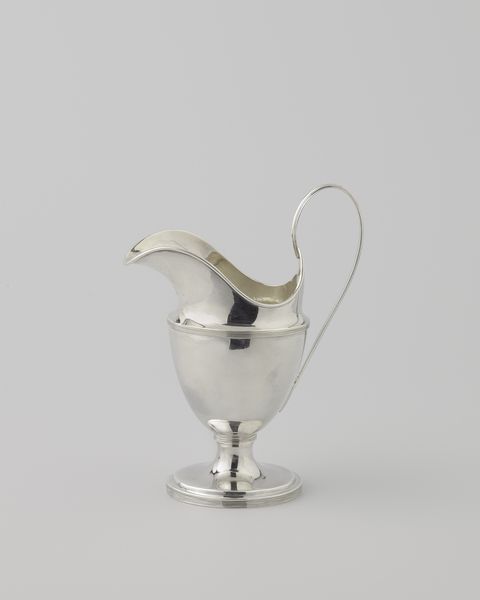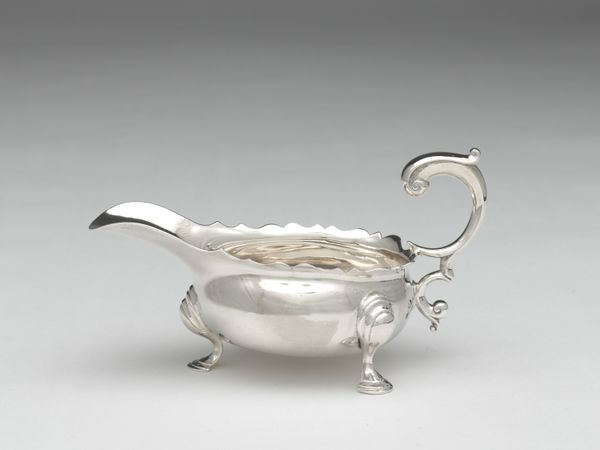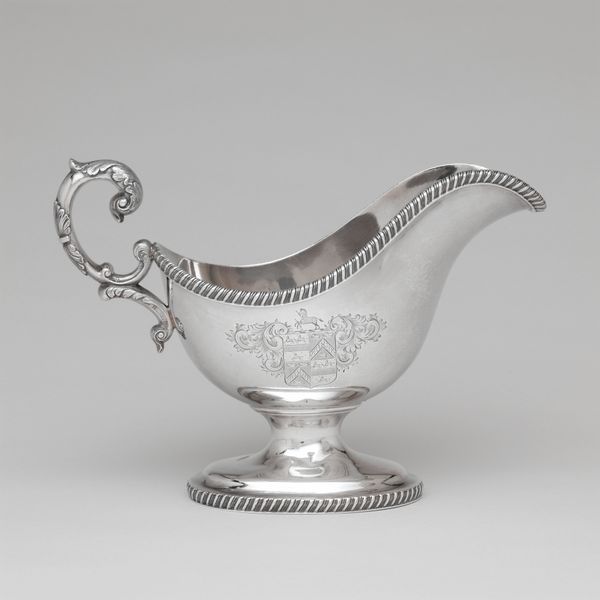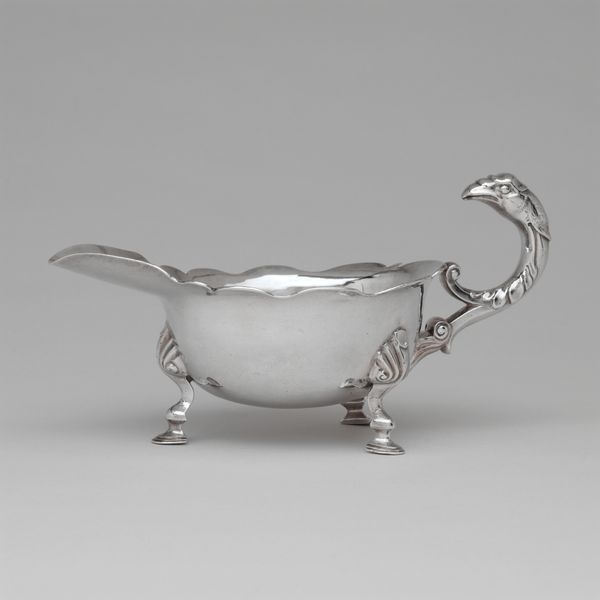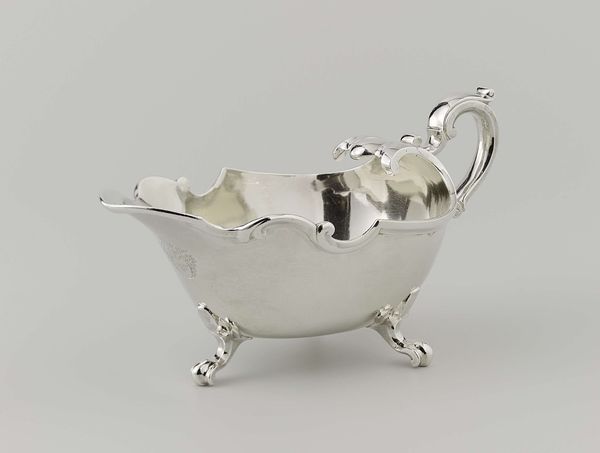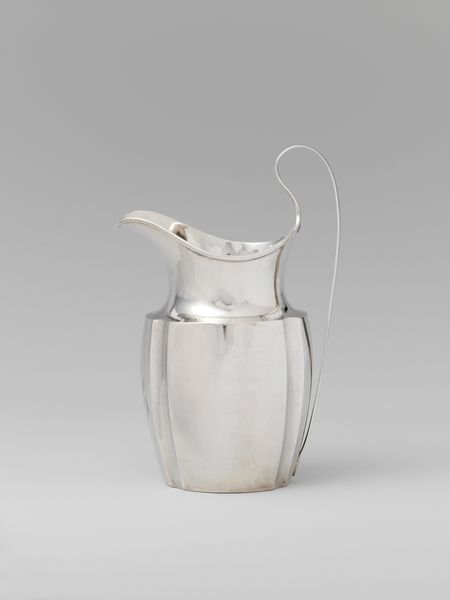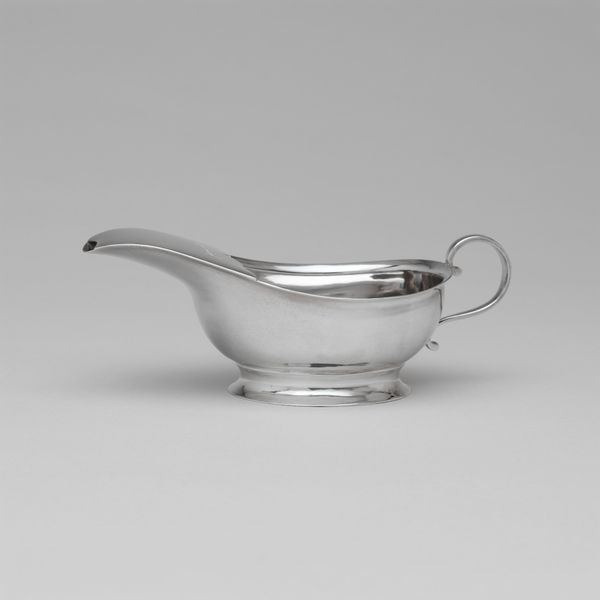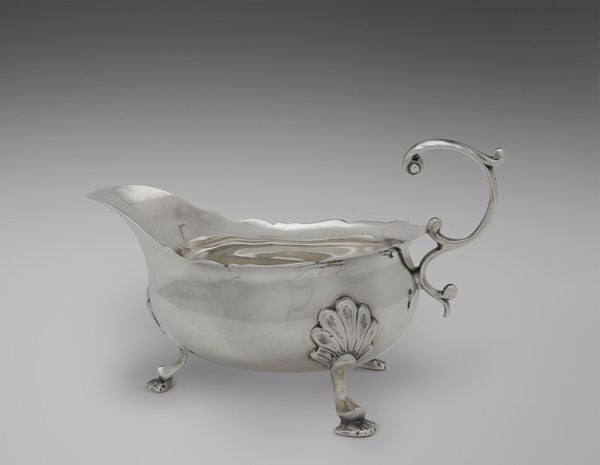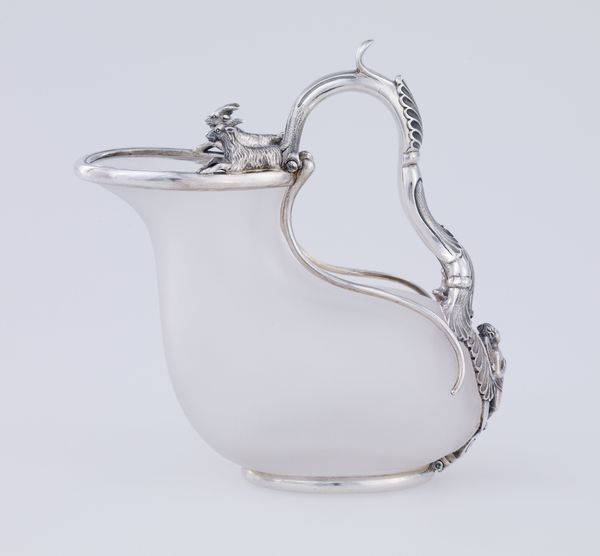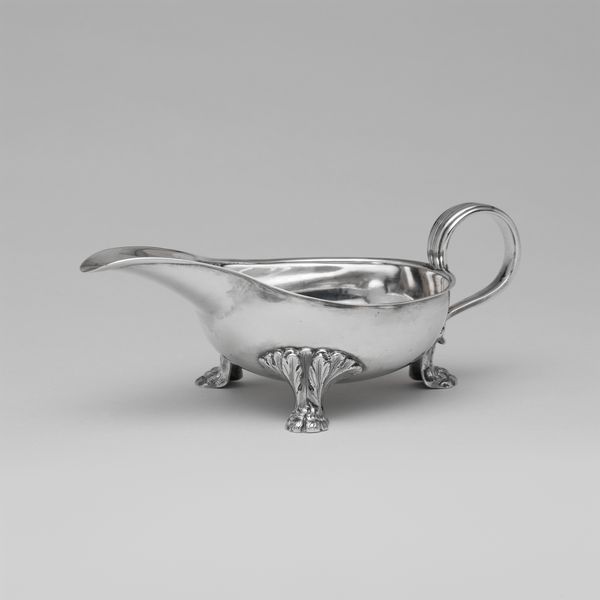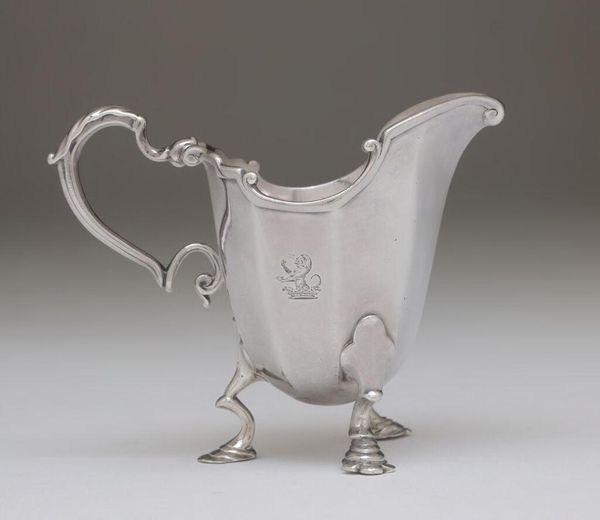
silver, metal
#
silver
#
metal
#
decorative-art
Dimensions: height 18 cm, width 21 cm, depth 10 cm
Copyright: Rijks Museum: Open Domain
Curator: Here we have a "Sauceboat", created around 1800 by Fa. Diemont. It's made of silver, so right away we're talking about precious metal, labor, and status. Editor: It's elegantly simple, isn't it? The stark reflections almost give it the appearance of being sculpted from light itself. One could imagine the conversations around tables it graced! Curator: Exactly. Let’s consider the silversmith's craft. The shaping of the metal, the process of creating something functional yet visually refined. Who made this, and what were their working conditions? Was it truly "decorative" or indicative of social norms regarding wealth and consumption at the time? Editor: I'm immediately wondering about the power dynamics at play. Whose labor created this? Who could afford such refinement? Was this a commission or part of a larger set reflecting societal rituals around food? How did foodways then differ along lines of gender or social strata, or class? Curator: Precisely. We see objects like this presented out of their original context. However, consider the act of crafting it – the process. What does the very shape, ergonomic or not, signify? Why silver rather than a more functional, readily available material? Editor: Silver in itself possesses connotations. Its reflective quality could almost be interpreted as reflecting its owners’ perceived virtue. The form is inherently gendered through foodways. Consider, even, women who traditionally served from or were tasked to obtain sauces. Curator: It goes beyond mere utility, doesn't it? It speaks volumes about social rituals, displays of affluence, the hierarchy embedded in everyday objects and labor practices... even down to polishing it, there's an inherent aspect of forced and often overlooked labor. Editor: Absolutely! And by examining these seemingly 'minor' art objects, we start seeing them as significant cultural artifacts representing deeper socio-political issues across genders, labor systems, and class divisions during its use and even into how we view it now. Curator: So, in reconsidering its materials and production, hopefully, our visitors understand that it's not *just* a decorative silver sauceboat; it's a point of entry to comprehending complex economic, material, and labor structures. Editor: Exactly, by acknowledging what such objects meant then versus now, perhaps the conversations this object spurs within ourselves, or across dinner tables of our own, might also contribute to broader considerations for how we live in the world today.
Comments
No comments
Be the first to comment and join the conversation on the ultimate creative platform.
